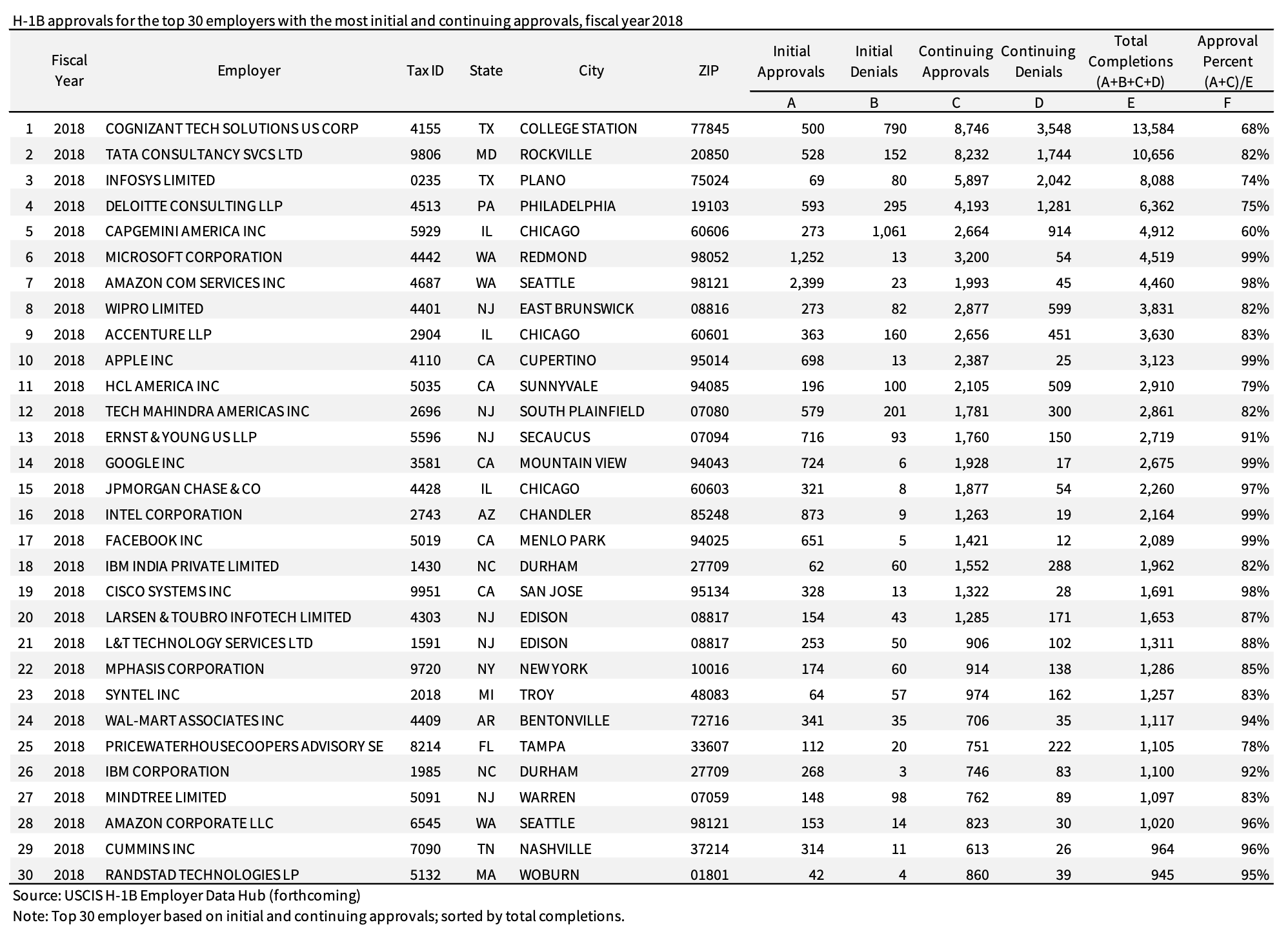I ran across an article about Facebook’s use of H-1B visas in my news crawl. This part really caught my eye:
Since 2017, as part of his promise to “hire American,” the Trump administration has been denying record numbers of H-1B visas—those offered to high skilled workers with bachelor’s and advanced degrees, including many engineers at Facebook, Amazon, and Google. In the three years that Trump has been in office, the denial rate for H-1B visas has risen from 10 to 24 percent. The United States issues roughly 85,000 new H-1B visas each year. In 2018, 651 of those visas were granted to Facebook employees, the seventeenth most of any employer in the country.
That got me curious. Around these parts, it’s obvious that Cummins is a big fan of the system, but I had no idea how much. If you click through that link from the article, you can see Cummins sits at 29th out of 30 largest users of the H-1B visa program! That was surprising to me!

From state-level data, we can see that, in Indiana, Cummins is #1, obviously.

I think both sets of numbers rather dramatically understate Cummins’ use of the H-1B visa program. Cummins employs lots of people through Tata, Infosys, KPIT, and, of course, my own employer, LHP. It seems like the counts in their totals that represent people working for Cummins ought be applied to Cummins’ count, and I’m assuming that this is same for the rest of the counts. I’m sure Tata and Infosys have people embedded in many of the other companies as well. I guess it doesn’t matter much in the end, but it would still be nice to remove the “consultancy indirection,” and just get final numbers for all of these companies. It would show who’s taking most advantage of the indirection.
Do other countries, like India and China, run programs like this, to get professionals from the US into their countries? I honestly don’t know, and any searches I do online seem to get redirected back to the H-1B program, because that’s all anyone seems to talk about, so it’s hard to tell.
Almost all visa holders I meet are be from India. Second place seems to go to people from various countries in Africa. China has about the same amount of people as India, and about as many as all of Africa combined, but I haven’t met any Chinese visa holders at Cummins. Mexico and Canada are right here on our borders. I’ve never even heard of someone from those countries working here under an H-1B visa. Why does it seem that the program is almost exclusively Indian? Again, I don’t know.
This is all very complex and fascinating to me. Maybe I should read a book and educate myself about the underlying dynamics. It’s just that I have so many books I’m already not reading…
